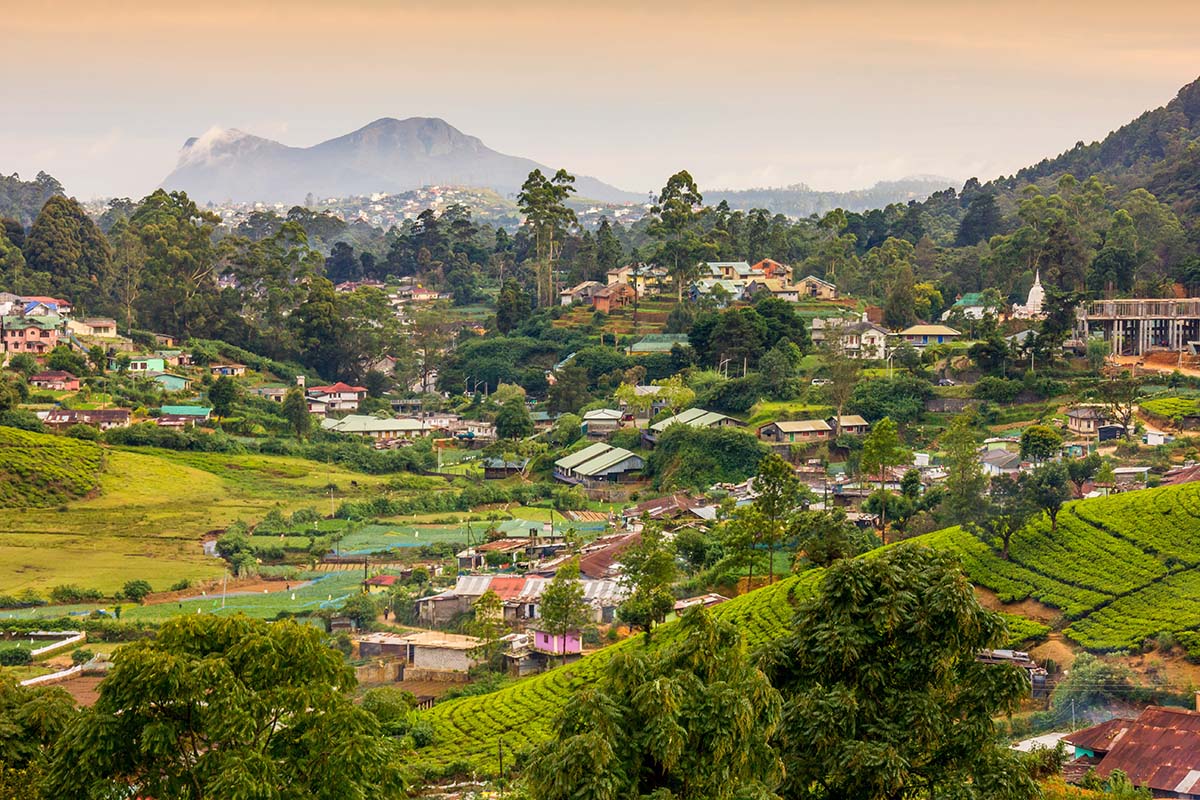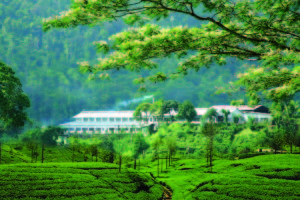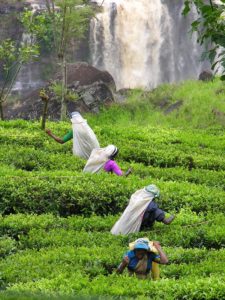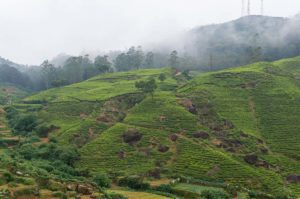 Sri Lanka’s tea sesquicentennial marks both a time of celebration and reflection.
Sri Lanka’s tea sesquicentennial marks both a time of celebration and reflection.
Once a coffee growing powerhouse, the island of Sri Lanka (then known as Ceylon), made a monumental pivot in 1867 that transformed virtually every hillside into tea gardens that in time yielded some of the finest tasting teas in the world. The country produces orthodox loose leaf and cut, tear, curl (CTC) processed black and green teas and even has a factory manufacturing wulong.

Virtually all the tea produced is exported. The country’s location in the Indian Ocean put tea-drinking Europe and the Middle East within each reach. Russia and the Commonwealth of Independent States (CIS) are Sri Lanka’s top trading partners and when combined with sales to the Middle East, account for 75% of exports. Sri Lanka is now the world’s third largest tea exporter with 17% market share but growing at only 5%. China, which is growing at double that rate, held an 18% share in 2015 with India accounting for 13% of the 1.8 billion kilo global export market.
Exports fell in 2016 to 280 million kilos from an average 325 million kilos due to unfavorable weather. Output fell for nine consecutive months until November. Production overall dropped 13.2% in the first 11 months of 2016. Tea output also declined in 2015 by 2.7% from a record $1.6 billion for the 2014 crop of 329 million kilos.
Growing, processing, and packaging Ceylon tea employs two million workers among a population of 20 million. Tea exports earned the country $1.3 billion last year, making tea the most lucrative agricultural crop and the nation’s fourth highest source of foreign dollars.
 Sri Lanka sells every kilo it produces at prices well above rivals Kenya and India. Therein lays its greatest challenge. Producing quality tea is more labor intensive than machine-harvested teas and Sri Lanka pays much higher wages. Sri Lanka is also committed to minimal use of herbicides and insecticides that reduce yield. The combination is more sustainable but results in a cost of production that is much higher than Kenya, which dominates the world market for black tea. There is a pronounced labor shortage and workers in Sri Lanka, unlike China, are organized into powerful unions that resist the global trend toward smaller cooperative and family-owned gardens.
Sri Lanka sells every kilo it produces at prices well above rivals Kenya and India. Therein lays its greatest challenge. Producing quality tea is more labor intensive than machine-harvested teas and Sri Lanka pays much higher wages. Sri Lanka is also committed to minimal use of herbicides and insecticides that reduce yield. The combination is more sustainable but results in a cost of production that is much higher than Kenya, which dominates the world market for black tea. There is a pronounced labor shortage and workers in Sri Lanka, unlike China, are organized into powerful unions that resist the global trend toward smaller cooperative and family-owned gardens.
The 150th year celebrations figure prominently in Sri Lanka’s plans to revitalize the financial underpinnings of its tea industry. Currently 70% of the country’s tea is produced by smallholders, an amount likely to increase with $65 million in government incentives. Sri Lanka encourages organic production and wants to be known as the world’s cleanest tea. Sustainable management of finite natural resources is written into the Constitution of Sri Lanka. The country bans pesticides and is considering an outright ban on herbicides along with a cap of 5,000 acres for plantations.
In 1990 agriculture employed half the country’s workforce, indirectly supported three quarters of the population and produced a quarter of the gross domestic product. Tea covered 230,000 hectares. The nationalized plantation sector has declined continually since the 1970s when tea, rubber, and coconut accounted for 90% of exports.
In 1970s Sri Lanka authorized the construction of reservoirs in the country’s Dry Zone that eventually brought 365,000 hectares of land into production. Today the Mahaweli Development Authority manages irrigation water for 100,000 ha of agricultural land including more than 50,000 ha during the maha (rainy season) and 35,000 ha during the yala or lesser rainy season. There are no more significant tracts of land to develop without incursion into the country’s remaining forests.
 Since Sri Lanka lacks the acreage of a China or Kenya, traders project a future similar to Japan where the high cost of production drives average wholesale tea prices to more than $10 a kilo. The real money is made in specialty categories like matcha, wulong and first-flush Darjeeling where prices rise to hundreds of dollars per kilo. Currently Sri Lanka teas average about $4.25 per kilo at auction. Learning to manufacture and market iced teas as well as hot teas and embracing technological advances in filling and packaging tea are immediate goals.
Since Sri Lanka lacks the acreage of a China or Kenya, traders project a future similar to Japan where the high cost of production drives average wholesale tea prices to more than $10 a kilo. The real money is made in specialty categories like matcha, wulong and first-flush Darjeeling where prices rise to hundreds of dollars per kilo. Currently Sri Lanka teas average about $4.25 per kilo at auction. Learning to manufacture and market iced teas as well as hot teas and embracing technological advances in filling and packaging tea are immediate goals.
The Tea Exporters Association is also pressing for the right to blend its teas with those from other countries. The government currently forbids the practice due to concern the mix will dilute Ceylon’s reputation as was the case in Darjeeling where teas were permitted to claim the moniker with as little as 51% Darjeeling tea by volume.
The focus should be quality, rather than quantity with greater earnings from tea, according to Navin Dissanayake, Minister for Plantation Industries. He said the government will announce an international marketing campaign financed with $35 million in fees paid by exporters.